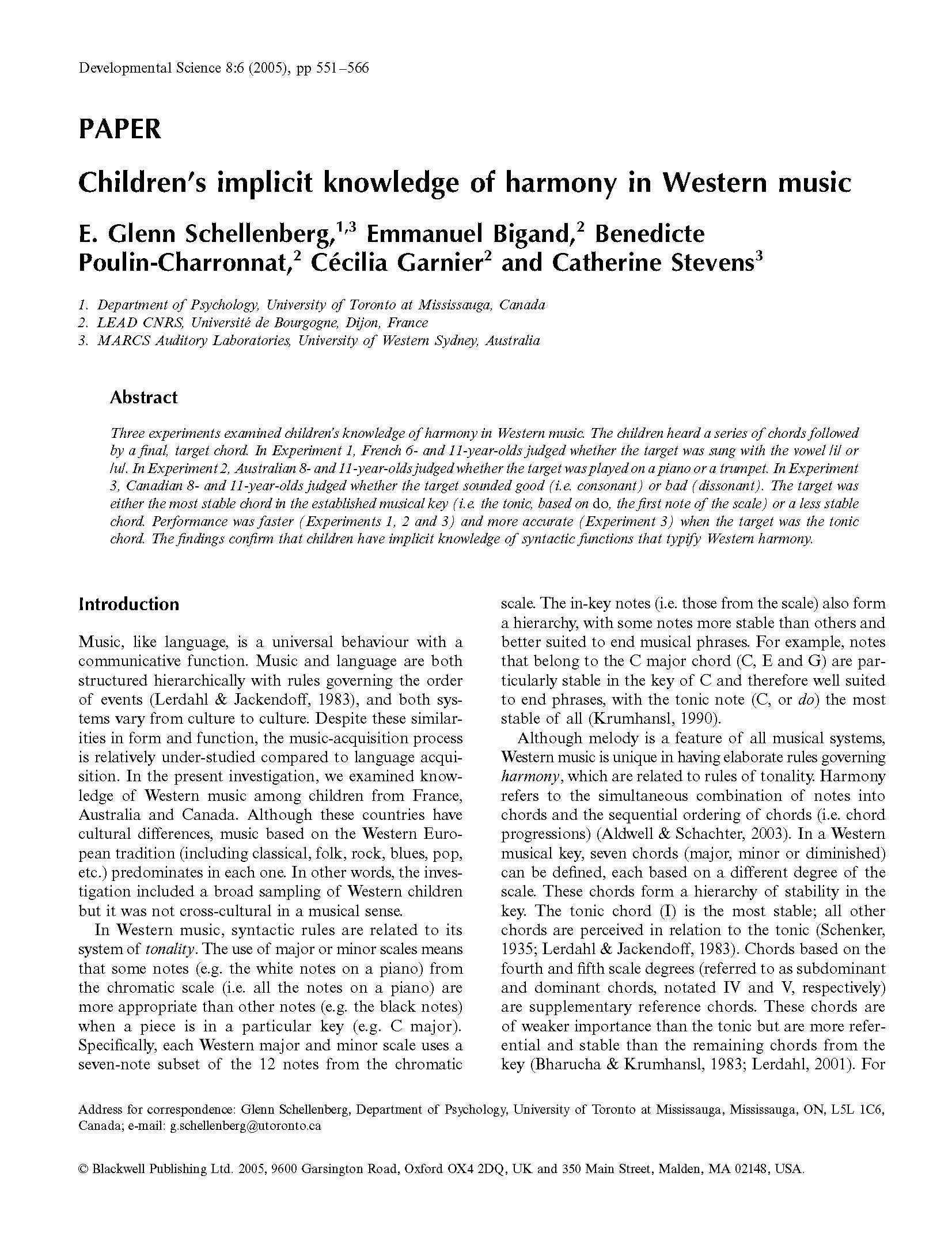Three experiments examined children’s knowledge of harmony in Western music. The children heard a series of chords followed by a final, target chord. In Experiment 1, French 6- and 11-year-olds judged whether. the target was sung with the vowel vertical bar i vertical bar or vertical bar u vertical bar. In Experiment 2, Australian 8- and 11-year-olds judged whether the target was played on a piano or a trumpet. In Experiment 3, Canadian 8- and 11-year-olds judged whether the target sounded good (i.e. consonant) or bad (dissonant). The target was either the most stable chord in the established musical key (i.e. the tonic, based on do, the first note of the scale) or a less stable chord. Performance was faster (Experiments 1, 2 and 3) and more accurate (Experiment 3) when the target was the tonic chord. The findings confirm that children have implicit knowledge of syntactic functions that typify Western harmony.
Children’s implicit knowledge of harmony in Western music
